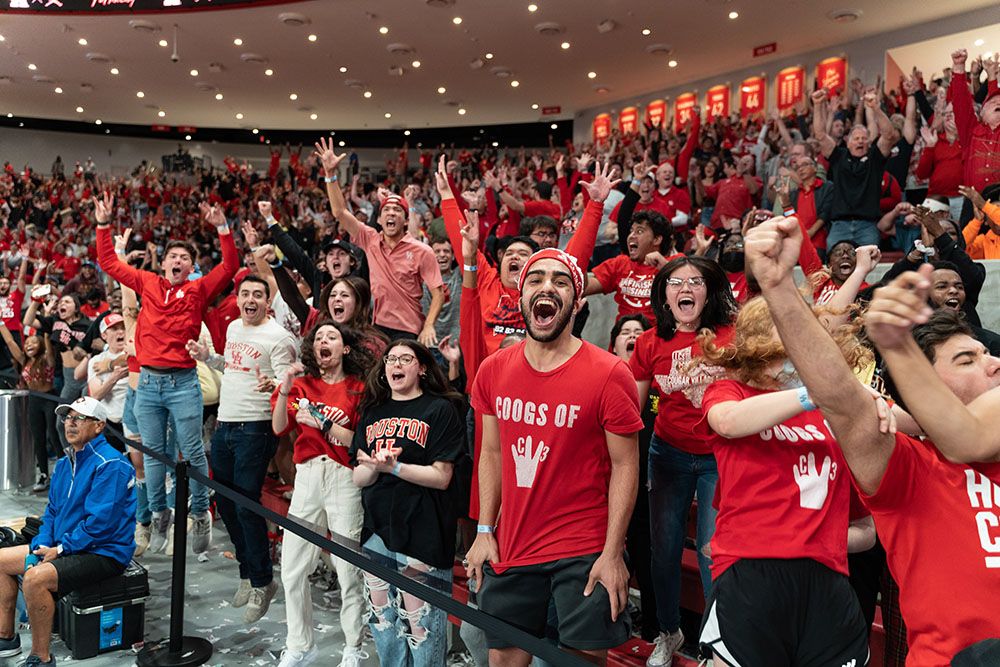Social Media Accessibility Guidelines
At the University of Houston, digital accessibility isn’t optional — it’s a mandatory mindset and practice for everyone working on UH communications.
As communication trends and platforms continue to evolve, we must be mindful of accessibility across the entire range of media. In accordance with our Social Media Policy and the Texas Administrative Code, University social media profiles must be accessible and usable by people with the widest range of capabilities possible.
2.6 All content on Official University Social Media Profiles must comply with 1 TAC 206 and 1 TAC 213 to ensure that the information is accessible and usable by people with the widest range of capabilities possible. Accessibility requirements apply to the content on the social media tool, not the features of the tool. It is the responsibility of the Official University Social Media Profile administrator to ensure social media content is fully accessible. Accessibility practices should comply with the guidelines posted to the Social Media Guidelines website.
The following guidelines are ways to ensure that your accounts and content are accessible.
Alt Text
Often referred to as “alt text” or “image descriptions”, alternative text is a written description of an image. For those who use screen readers, alt text is invaluable. Without an understanding of the image that’s in a post, your audience may not get the full story. The alt text does not typically appear anywhere on the screen, but it will be read aloud for people who have accessibility settings enabled on their devices.
When creating your post, there is a separate field for entering alt text. As you write your alt text, briefly describe what the image looks like. Think about the details that are most important. Are people in the image? What are they doing? Are the outfits that they are wearing key information for the post? Use your best judgment to find a balance between too much information and too little, as writing an overly long description will result in a screen reader taking a long time to read your post.
Alt Text Example

Avoid sharing graphics with a large amount of text
It’s recommended that you avoid sharing graphics that have large amounts of text, such as a graphic that was designed to be a print flyer. Graphics like these are difficult to read on mobile devices since they were not designed to be displayed only several inches in size. Creating a graphic that is attention-grabbing and then putting the bulk of the information in the post copy itself or at a website that you include a link to is generally a better strategy. Any text included in a graphic should be written in the alt text.
Captioning
Having captioning (sometimes called subtitles) available on the videos that you post allows people to understand a video without having the sound on. Most social networks automatically begin playing a video that you scroll to with the sound muted, so having captions playing at the bottom of a muted video can help draw people in and watch your content. For people who are deaf or hard of hearing, captioning is essential.
There are two main types of captioning: Closed captions and open captions.
Closed Captions
Closed captions are captions that can be turned on or off and are stylized by the platform they are playing on.
Example of a video on X with closed captions (you may need to view on the X website or app):
"We are back, stronger than ever. And ready to keep moving forward." - @UHpres pic.twitter.com/I5rqaBpX7A
— University of Houston (@UHouston) November 2, 2021
Open Captions
Open captions are edited into the video itself and cannot be turned on or off. These captions have a visual design of the editor’s choosing. Since they are “burned in” to the video file itself, they cannot be adjusted in any way by the viewer.
Example of a video on X with open captions:
Do YOU want a chance to win a $200 shopping spree at the UH Campus Store? Take a photo of your red today and post on Twitter or Instagram with the hashtag #CougarRedFriday! You can also email your submission to social@uh.edu. pic.twitter.com/7IO6b7ltf0
— University of Houston (@UHouston) October 8, 2021
Creating Video Captions
There are many ways to create closed captions for videos. Editing software such as Premiere Pro or Final Cut Pro have captioning tools built in and allow you to write and export caption files. Caption files are uploaded alongside your video, typically in the same menu that you use to adjust the thumbnail, title and description.
Step-by-step guide to creating video captions
Capitalization
There are instances on social media where multiple words may have to be combined with no spacing. Usernames and hashtags are an example of this. To make them easier to read, capitalize the first letter of each word.
Examples
- #GoCoogs instead of #gocoogs
- @UHouston instead of @uhouston
Stylizing Text
Social networks do not allow you to use custom fonts for the text in posts. They also don’t allow you to make words bold or italicized in the proper way. However, some people work around this by converting the text in their posts to use other special characters that are available on computers, as seen below.
𝙀𝙭𝙖𝙢𝙥𝙡𝙚 𝙤𝙛 𝙩𝙚𝙭𝙩 𝙘𝙤𝙣𝙫𝙚𝙧𝙩𝙚𝙙 𝙩𝙤 𝙚𝙢𝙪𝙡𝙖𝙩𝙚 𝙩𝙝𝙚 𝙖𝙥𝙥𝙚𝙖𝙧𝙖𝙣𝙘𝙚 𝙤𝙛 𝙗𝙤𝙡𝙙 𝙖𝙣𝙙 𝙞𝙩𝙖𝙡𝙞𝙘𝙞𝙯𝙚𝙙 𝙩𝙚𝙭𝙩.
Though the example sentence has the appearance of a sentence that is in bold and italics, it is actually using characters that are intended to be symbols that are entirely different than those that are a standard part of the alphabet. Because of this, a screen reader will not read out the sentence correctly. Therefore, any sentence using such characters is considered inaccessible.